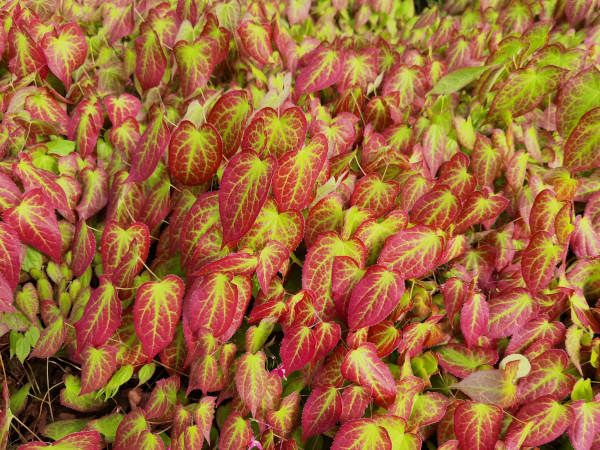How to grow Epimedium
Epimedium were given its genus in 1753 by Carl Linnaeus the Swedish born botanist and physician who formalised binomial nomenclature (two-term naming system) the modern system of naming organisms. He is known as the ‘father of taxonomy’.
Epimedium are in the Berberidaceae family. A family of over 700 species of mainly Berberis, the woody, prickly garden shrub!
With the majority of the epimedium genus endemic to China with small numbers in Asia and a few in the Mediterranean. Chinese botanists discovered Epimedium grandiflorum contains icariin which is a weak PDE5 inhibitor. Extracts from this plant are used in Chinese medicine to enhance erectile function.
Epimedium are a genus of 65 species and a few hybrids with the majority unavailable in the U.K. or not commercially viable. Epimediums are herbaceous perennial, woodland type plants growing from an underground rhizome. Heart shaped leaves with a spreading habit are produced from the base of the plant and their growth is variable; some varieties leaves are carried overwinter making them evergreen. Some varieties have solitary leaves per stem and others have several.
The flower is an open raceme or panicle and the number of flowers per stem varies per variety. Often commonly called ‘Bishops Hat’ due to the shape of the inflorescence. There are four sepals which peel back as the flower opens with four larger petal-like brightly coloured inner sepals. Inside there are 4 true petals which peel back and lay against the outer petals. Inside there is a nectar producing spur that may be longer than the sepals and four stamen.
Preferring moist well drained soil once established they will flourish in dry shady spots at the base of trees providing low growing, compact, red or bronze tinted foliage in spring which fades to light green as the season progresses.
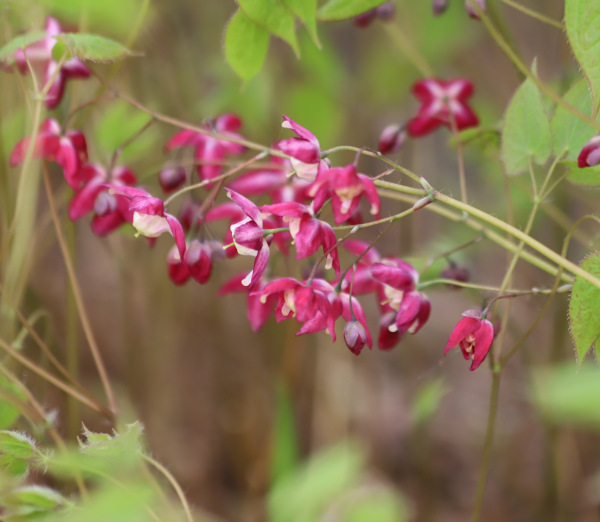
Zantedeschia is a genus of flowering plants from the family Araceae and is native to southern Africa. With a rich history dating back to the Ancient Romans, these deciduous or semi-evergreen perennials have been used as a symbol of celebration. Zantedeschia was Named after Professor Giovanni Zantedeschia, an Italian botanist.
There are two main forms of Zantedeschia: hardy and tender. Hardy forms of the plant can be grown outdoors, enjoy moist soil and full sun or partially shaded conditions - these are known as Arum lilies. Tender forms of Zantedeschia prefer being grown in containers or pots and should be brought inside over the winter - these are known as Calla lilies.
With tuberous flora in all colours from whites, yellows and oranges to deep reds and purples, Zantedeschias are not to be overlooked in any garden, as long as they have sufficient sunlight to grow in.
Ready to learn more about growing Zantedeschia? Read on for all there is to know...

Key Information
Soil pH
Position
Hardiness

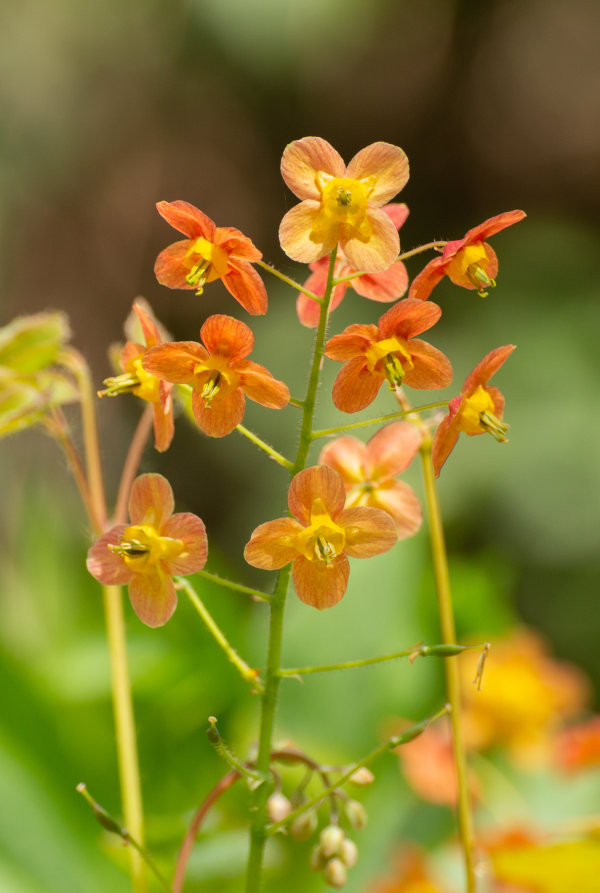
Where & when to plant Epimedium
Position - Full Sun or dappled shade.
Soil - Moist well drained soil which can be slightly acidic to alkaline. Will grow in chalk, loam or sand.
Flowers - Mid to late Spring
Horticultural Divisions - here we list out the most popularly cultivated species and hybrids available in the U.K.
| Species | Common name |
HARDY – In all of the UK and Northern Europe (H6/ -15°C to -20°C) Grow anywhere in the UK
| Epimedium acuminatum | Acuminate barrenwort |
Epimedium alpinum | Alpine barrenwort | |
Epimedium chlorandrum | Acuminate barrenwort, | |
Epimedium fargesii | Farges barrenwort | |
Epimedium franchetii |
| |
Epimedium grandiflorum | Bishops mitre Bishops hat | |
Epimedium pinnatum | Persian epimedium | |
Epimedium pubigerum | Hairy barrenwort | |
Epimedium pubescens | Hairy leaved barrenwort | |
Epimedium sagittatum | Horny goat weed | |
Epimedium sempervirens |
| |
Epimedium stellulatum | Barrenwort |
Epimedium can be planted all year around when purchased grown in pots but autumn and early spring are probably best for an easier transplant. Bare rooted plants are best planted in early spring when the ground is not frozen or waterlogged.
If container grown plants are planted out during the active summer growing season make sure that they are watered regularly until the plant has settled into its new location. Water at soil level rather than the foliage.
Epimedium are ideal in cottage garden schemes, front of flower borders, woodland and containers!
How to plant Epimedium
- For planting in the garden, dig the soil area removing any large stones and weeds and breaking up any lumps. Mix in some organic matter, ideally leaf mould, though manure or garden compost are also fine. Rake level and firm with your heels. Rake level again.
- Water plants well and allow to drain before planting.
- A good tip is to dig a hole twice the size of the root-ball. Fill with water and allow to drain before placing in the plant which is especially good for summer plantings.
- Remove the plant from its pot placing the plant in the hole, ensuring the top of the root ball sits level with the surface of the soil. Too low and the plant may rot, too high and the roots can dry out. If bare root hold the plants crown at soil surface level allowing roots to dangle into the hole.
- Backfill with soil and firm in gently with your foot.
- Soak soil well with water.
- For planting in containers, first choose an appropriately sized pot around 5-7cm larger than the root ball of your plant (you’ll need to gradually increase the pot size every few years). Always ensure there are plenty of drainage holes in the bottom.
- Use a good quality potting compost if you have it and mix with garden soil. Mix in some horticultural grit and, if not already present (check the labelling on the bag) some slow-release fertiliser granules.
- Start by partially filling the pot with compost; enough so that when placed on it the upper surface of the root ball is about 3cm lower than the top of the pot.
- Fill around the plant with compost, firming down with your fingers then adding a little more so it is held tight.
- Pick up the container and lightly tap on the potting bench or ground a few times to help further settle the compost around the plant.
- Soak well with water.
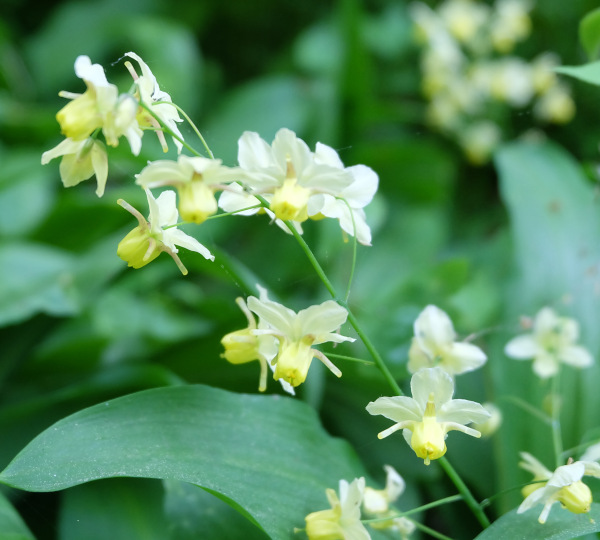
What to plant with Epimedium
Outdoors, plant alongside plants with different shaped or coloured foliage as a contrast whilst also making sure nearby plants have interest when epimedium are dormant.
Try Anemone, Astrantia, Crocus, Digitalis, Ferns and Grasses, Galanthus, Hosta, Hellebore, Heuchera, Narcissus (Daffodil), Pansy, Primrose, Tulip.
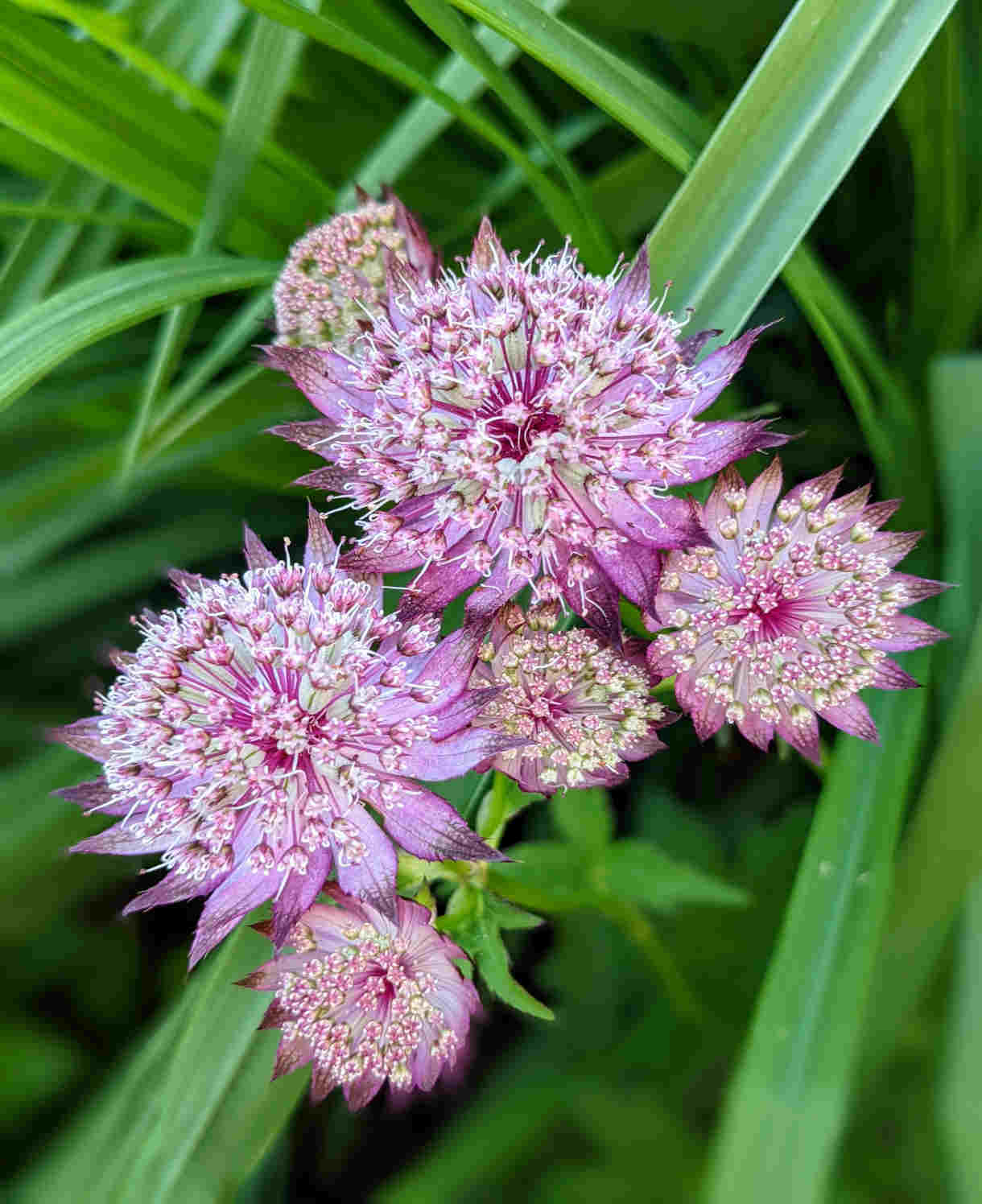
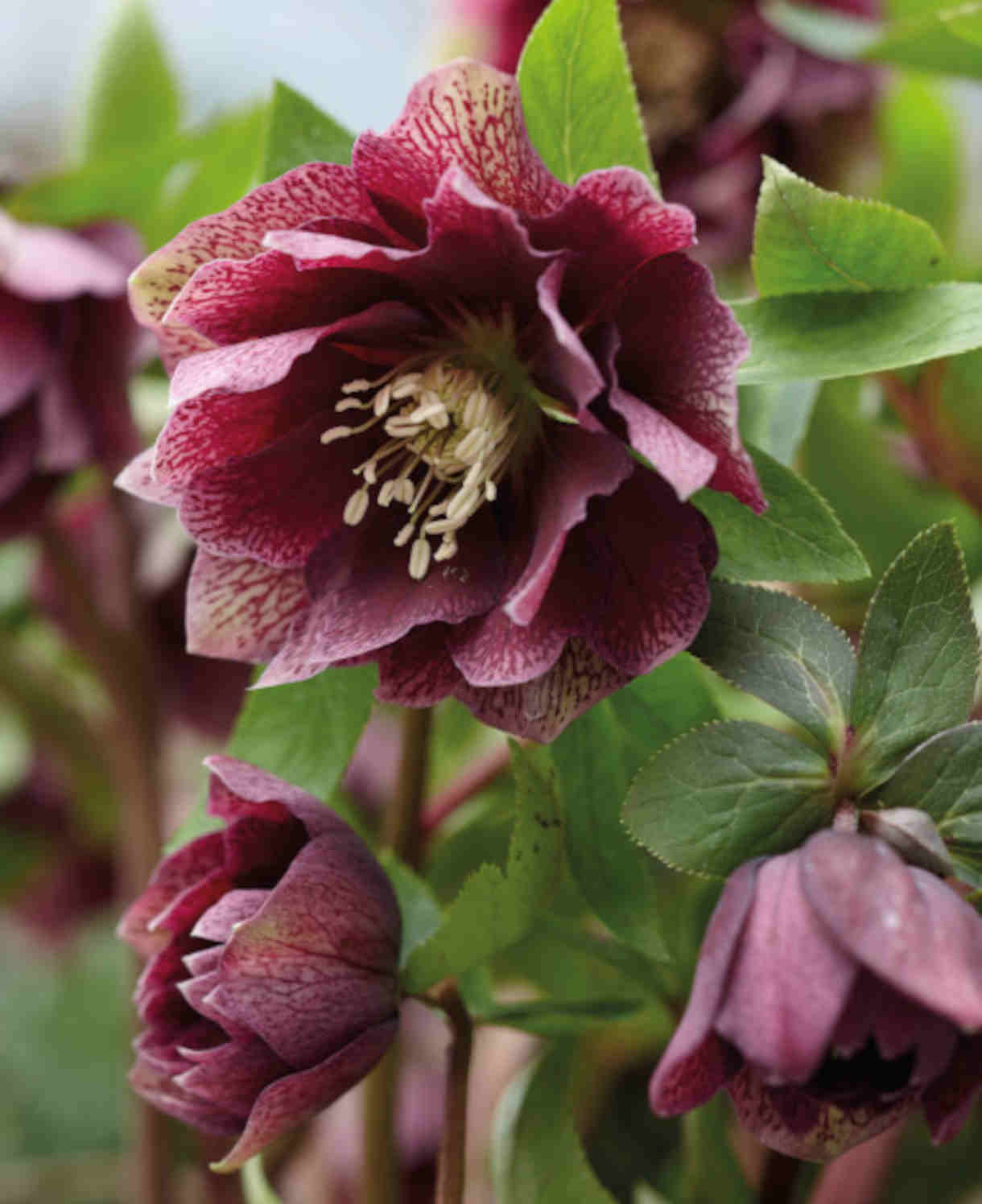
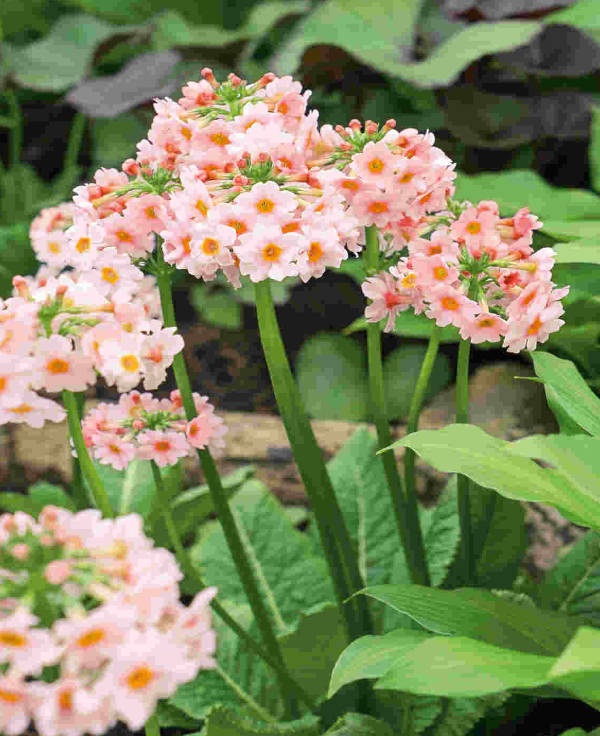
How to care for Epimedium
Pruning and Deadheading
Many epimediums are semi-evergreen. I’d leave the leaves on throughout the winter protecting the crown. By springtime the leaves will begin to look tatty. Cut these leaves to ground level before flowers arrive in spring.
Remove spent flowers by cutting off flowering stem at the base.
Watering
Preferring moist yet, free drained sites water sparingly.
On planting outside, they benefit from a good watering in on planting and then regular soakings until established. After this they should not need watering.
If grown in containers water the soil regularly checking the to see if the soil is dry when you wiggle your fingertip into the soil surface.
Feeding
On healthy, fertile soil, a mulch of well-rotted organic matter (i.e., a layer of leaf mould, manure, or garden compost applied to the soil around the plant) should provide enough nutrients for your epimedium. This has the added benefit of suppressing weeds and locking in moisture. Mulch when planting, and then again each spring.
If you garden on poor soil or your epimedium looks in need of a boost, applying a granular general purpose feed to the surface of the soil and lightly working in can reap benefits. This is known as a top dress and should be done when you’re mulching in spring – first apply the feed, then cover with the mulch.
Container-grown plants are different as they rely solely on the gardener for nutrition. Get off to a flying start by making sure you use a good quality compost with slow-release granules mixed in. These generally provide nutrients for around 6 to 8 weeks, after which you’ll need to apply a liquid feed every 2-3 weeks until the end of the growing season (i.e., September-ish).
Remember to repot your epimedium every few years into a slightly larger pot using fresh compost. In-between, it’s worth removing the top few centimetres of compost each spring and replacing with a fresh mix of compost and slow-release granules.
Cold Protection
Epimedium are hardy garden plants and should not need any winter protection. Other than ensuring they are not left sitting in water. If container grown ensure water can get away from the base of container by using pot feet.
Pests and Diseases
Epimedium are generally pest free although can be effected by vine weevil.
How to propagate Epimedium
The recommended way to propagate epimedium is by root division.
When your plant is at least 3 years old and has been growing well in the previous season you should be able to divide the root structure into more plants.
Epimedium are spring flowering so require division in early autumn.
- Make sure the plant is not suffering from drought, pest or disease.
- Lift plants carefully by digging all around its crown with a fork.
- Shake off excess soil so you can clearly see the roots.
- Gently tease apart the rhizome you may need a sharp clean knife portion the root into 2 or 3 sections each containing growing tips and roots.
- Trim off all foliage to above the crown.
- Either replant the bare rooted section back into the position in the garden as described in Planting in the Garden or plant root sections into a 1 litre pot as per the instructions for Planting into a Container
- Water well and leave.
- The epimedium plants may not show signs of growth above soil level until spring.
* Many plants carry Plant Breeders Rights and cannot be propagated for commercial purposes.
Common Epimedium questions
When should epimedium be cut back?
Remove faded flower stems by cutting off at soil level. Leave foliage on overwinter and cut off at soil level before the flowers appear in early spring.
How tall does epimedium grow?
Dependent upon variety, anywhere between 20cm and 50cm
Where does epimedium grow?
Preferring a woodland like setting, under trees and large shrubs with dappled or part shade in moist free drained soil.
Can you grow epimedium in pots?
Epimediums look great in mixed containers for spring colour. Plant with evergreens and spring flowering bedding for a natural container display.
Are epimedium poisonous to dogs?
There are no reported toxic effects known.
